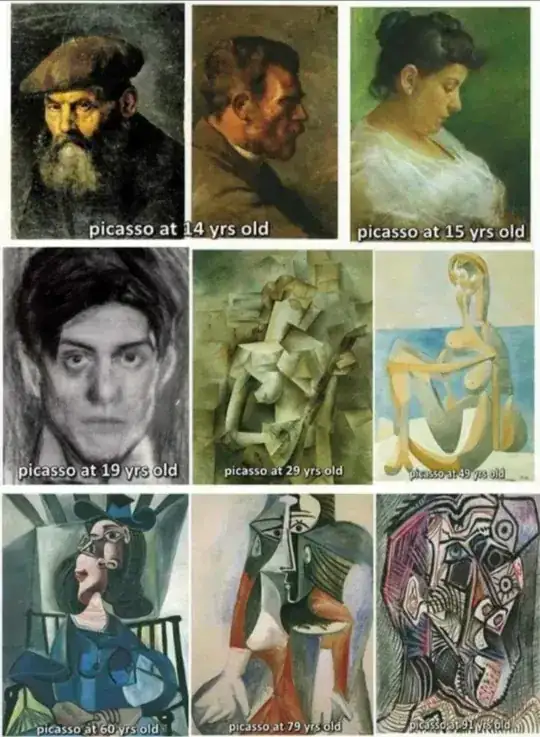The term "AI" in this question can be a bit ambiguous, so let's figure out what it means, first.
There are many types of AI, but the two which currently intersect most strongly with the areas this question covers are also the two which are also currently getting the most public and academic attention: GANs and diffusion models (used for image generation), and LLMs (used for text generation).
GAN: Image Generation
GANs are not capable of innovation: they will instead produce something that matches the request they are given, in a way that embodies the gestalt of the things they were trained on.
So, you can train a GAN with pre-Picasso images, making sure to annotate those images with all the necessary words/traits that you will use in your future prompts; then you can prompt it to generate an image that has the traits of a Picasso. If you trained it and prompted it well enough that it can understand concepts like "flat color" and "angular shapes" and such, then it may do a passable job of making something Picassoish.
But I'd argue that in producing that art, it introduced no novelty beyond randomness: it instead produces something that is absolutely as non-novel as possible, that also fitted your criteria. GANs are explicitly designed to NOT add novelty. No extra fingers, please. Exactly two eyes, possibly occluded.
LLM: Text generation
This is where novelty can come in.
You can likely ask an LLM trained with reading pre-Picasso reading material to:
- define what makes novel art movements novel;
- create an example description of its own radically novel art style that matches that definition;
- create a GAN prompt for art to be drawn in that new style.
The style will not be Picasso. But it might be similarly derivative, and similarly novel, to his early work.
If you then iterate on that, over hundreds of images, retraining both your GAN with those new images as they are produced, and your LLM with (fictional) reviews and news articles about them, so that you eventually have the equivalent of a human working for decades, getting feedback, and developing his own personal style...
...then you might get a progression not unlike this:

